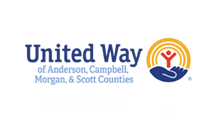Each year, we revise our community needs data to ensure we are focused on the greatest current and emerging needs in our county. Every few years, United Way of Anderson County collaborates with several other agencies to collect significant amounts of data for a full Community Needs Assessment.This Community Needs Assessment identifies the strengths and resources available in the community meeting the needs of children, youth, and families. This assessment focuses on the capabilities of the community, including its citizens, agencies, and organizations. In addition, this data collection also allows us to identify those individuals and families in need. These clients are then categorized by different classifications and types of needs. We drill down into the severity of the needs to further pinpoint gaps amongst the resources.
The final piece of data collection for United Way is to host a Community Roundtable – this was completed just a few weeks ago. We brought together many of the Anderson County non-profit agencies, school staff, and community partners to review our findings as well discuss current resources, community needs, and gaps. This year, we had 32 participants, 17 agencies, and a representative from every school district in the county come together for this discussion.
This group of people spent two hours having very open and honest conversations allowing us to determine if the data truly reflects what is being seen on the front lines. In addition to just conversation, the group proposed categories of need, gaps, resources, and most importantly some solutions.
The data and the group aligned with 5 focus areas in Anderson County: Substance misuse, Mental health, Physical Health, ALICE (asset-limited, income constrained, employed) population and Child Well Being.
Substance Misuse:
In 2020, there was an 82% increase in drug overdose deaths in Anderson County (after an 11.6% decline in 2019)
Child Well Being:
Family & community – #1 county in child removals, high rate of substantiated abuse & neglect
Economic issues – affordable housing, economic instability’s effect on emotion and financial well being
Education:
Chronic absenteeism
59.3% of students in AC are economically disadvantaged
Health:
Less access to preventative care during pandemic
ALICE Population (Asset-Limited, Income-Constrained, Employed)
49% of AC households were below the ALICE threshold (before pandemic)
40.5% of seniors in AC live within the ALICE level
Mental Health:
1100:1 – population to mental health care providers
Huge spikes in requests for mental health services
Rise in ER mental health visits for children during 2019 & 2020
Isolation of our senior population in assisted living facilities
Toxic stress
Physical Health:
Food insecurity remains an issue, though churches and nonprofits filled many gaps during pandemic
Lack of access to physical activity opportunities
Additional Roundtable Findings:
Most pressing needs:
- Transportation
- Houselessness
- Grandparents as primary caretakers
- Internet access
- Deeply localized by town identities
- Not much connection between towns
- Rural even less connected
- Resources struggle to keep up with the need (degrades client trust over time)
- Assets: community engagement, faith spaces, nonprofit ecosystem
Takeaways from Community Needs Assessment and Community Roundtable:
Mental health, child well-being, and substance misuse is at an all time high. We will be hosting a mental health committee to further discuss rising needs and possible solutions. We will continue collaborating with the schools and ASAP of Anderson County to track these priorities.
Agencies agreed that a monthly meeting to check in and continue this conversation from the Roundtable would be very positive, so we will be hosting these as well.
But at the end of the day, what we learned is we are stronger together, as a community and as a collaborative team.

